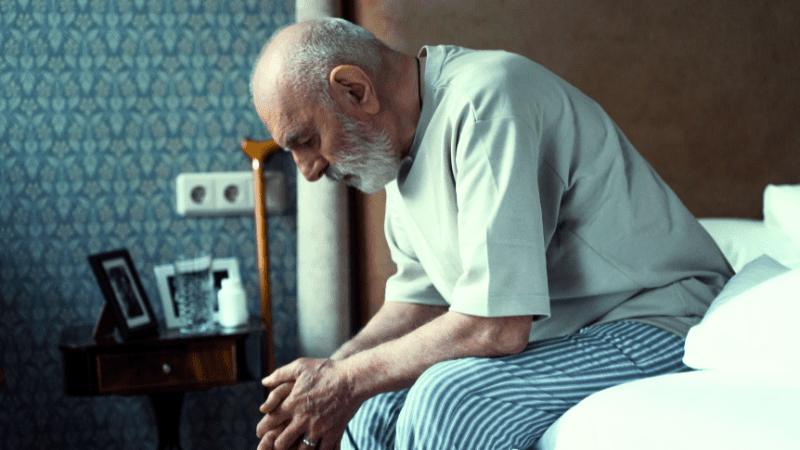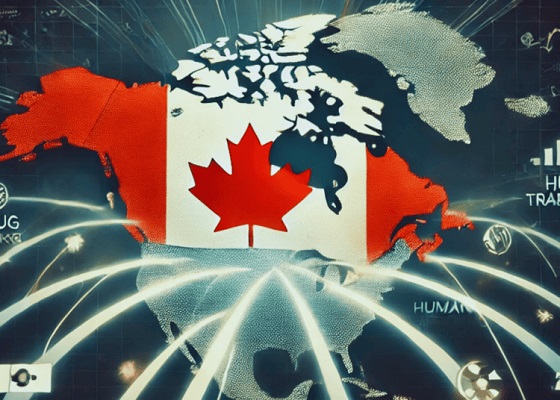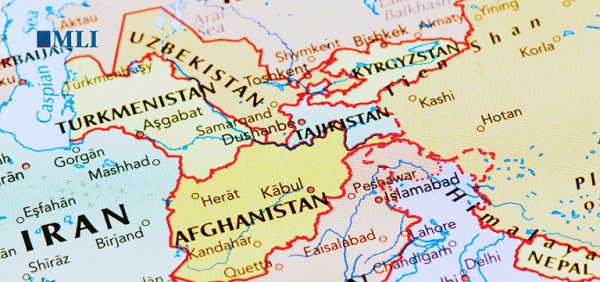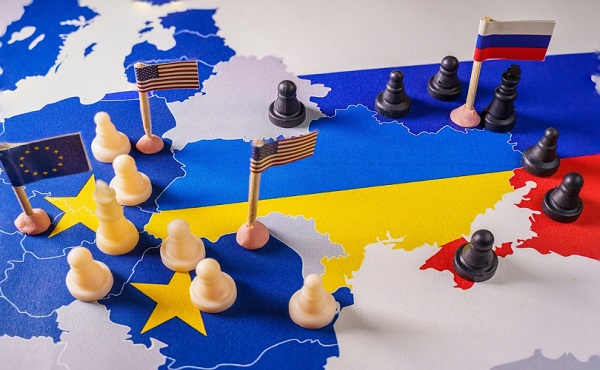MacDonald Laurier Institute
Barriers to care persist but access to MAiD keeps expanding

From the Macdonald Laurier Institute
By Ramona Coelho
Our government has allowed the incredible power of certain lobby groups to control the public discourse and policies around MAiD and its expansion, prioritizing access to MAiD over the safety of Canadians.
My family medicine practice serves predominantly low-income and marginalized patients, including refugees, those who have been in our prison system or are facing charges, and many with disabilities and mental health issues. My patients experience high barriers to care and support and face social isolation and all kinds of discrimination. Observing the impacts of this has left me deeply concerned about our government’s priorities.
When the federal government introduced MAiD (a medical procedure that causes death) to those not at imminent risk of dying, I was appalled to learn that my patients, who are frequently blocked from care as a result of hurdles created by our government and systems, could potentially be offered an expedient death provided by the government.
In 2016, assisted suicide and euthanasia were first legalized in Canada and the term medical assistance in dying (MAiD) was created. Originally MAiD was presented as an exceptional lethal procedure for ending the lives of consenting adults who were experiencing intolerable suffering and were near death. The legislation required that patients meet certain criteria, including having a “grievous and irremediable” medical condition, such as organ failure or cancer, and a “reasonably foreseeable natural death.”
But the Canadian discourse around MAiD rapidly shifted to facilitating access and there has been a broadening of the number and criteria of those who qualify for MAiD. In 2021, Bill C-7 came into effect and removed some of the safeguards within the original pathway, now called Track 1, and created a new, second track, Track 2, for adults with physical disabilities[1] who are not dying. Furthermore, there is a planned expansion, though the timing is currently being debated in Parliament, for patients whose only medical condition is mental illness. Parliamentary recommendations in 2023 included future expansion to children and to incapable adults who signed advance directives for euthanasia.
Currently, those in Track 1 with a “reasonably foreseeable natural death” can potentially have their life ended the same day as the initial request if all the criteria are met and practitioners are available.
For those in Track 2, those not dying, death by lethal injection is set at a minimum of 90 days after the completion of the first MAiD assessment. To qualify for this track, a patient must also have a “grievous and irremediable” condition and experience intolerable psychological or physical suffering. Suffering is treated as purely subjective with no requirement for further validation. There is also no legal requirement for standard treatment options to be accessible or tried, only that a patient be informed that they exist. This means that a patient who says they are suffering intolerably could access MAiD having declined treatments that would remediate their condition. This could be because the treatment is inaccessible, or unaffordable, or if the patient declines therapy.
The Canadian Association of MAiD Assessors and Providers (CAMAP) has received 3.3 million dollars in funding from Health Canada to educate clinicians assessing and providing for those who have requested the service. So although the existing Track 1 and Track 2 pathways have different safeguards, in aiming to allow those near death to have access to MAiD quickly and with no barriers, CAMAP has created a guidance document that suggests clinicians can be flexible as to whether someone fits Track 1’s reasonably foreseeable natural death, since the law does not require that the person be terminally ill or likely to die within 6 or 12 months. It also states that a person may meet the reasonably foreseeable criterion if they’ve demonstrated a clear and serious intent to take steps to “make their natural death happen soon, or to cause their death to be predictable.” This could come about from a refusal to take antibiotics for an infection, stopping oxygen therapy, or refusing to eat and drink.
This means that people with disabilities can state their intention to or make themselves sick enough to qualify as having a reasonably foreseeable natural death, as is currently happening with adults who are not dying and yet are having their lives ended within days of their first MAiD assessment. In one case, a man had a mild stroke and received MAiD shortly after, even though he wasn’t terminally ill. The reason? He was approved for track 1 as he was temporarily eating less. This was due to following a cautious meal plan ordered by the treating team which was intended to prevent choking and aspiration risks.
Currently, some places in Canada have MAiD rates that are the highest in the world. By the end of 2022, there had been almost 45,000 MAiD deaths across Canada since legalization—more than 13,000 of which took place in 2022 with 463 of those individuals accessing MAiD through Track 2. Estimates based on provincial reporting approximate 16,000 deaths in 2023. Health Canada and MAiD expansionists have tried to reassure the public that the overwhelming number of MAiD deaths have been mostly Track 1 deaths (implying they were dying anyway) but we do not know how many of those persons were “fast-tracked” and may have had many decades of life left to live and the potential to recover with time and care.
The CAMAP guidance document that seems to circumvent Track 2 safeguards is just the beginning of many serious problems with MAiD legislation and practice in Canada.
Patient safeguards for MAiD are lacking
Other jurisdictions in the world where MAiD practices are legalized, such as New Zealand and Victoria, Australia, frown on or prohibit raising death as a treatment option. This is due to the power imbalance that exists between physician and patient, coupled with the patients’ assumption that the provider will only suggest the best options for their health. Raising MAiD unsolicited could cause undue pressure to choose death. Yet Health Canada’s 2023 Model Practice Standard for Medical Assistance in Dying recommends that MAiD should be raised to all who might qualify if the practitioner suspects it aligns with a patient’s values and preferences.
The model practice standard’s approach to “conscientious objection” is equally troubling. Health care providers who object to providing MAiD, even in specific cases, are considered conscientious objectors. A physician who is concerned that MAiD is not a patient’s best option is supposed to ignore their conscience or professional opinion and simply refer the patient on so they can seek access to a MAiD death.
This is further echoed in a CAMAP video training session where experts explain that patients might be driven to MAiD by unmet psycho-social needs. The expert leading the session responds to a trainee’s concerns: “If withdrawing is about protecting your conscience, you have [an] absolute right to do so.” But he adds: “You’ll then have to refer the person on to somebody else, who may hopefully fulfill the request in the end.” This demonstrates precisely how effective referrals can funnel patients toward death despite legitimate professional concerns and obligations that should have instead led to the process being stopped or paused.
In response to this legislation, many from the disability community have advocated for safe spaces where MAiD can’t pose a risk to their lives. The Disability Filibuster, a national grassroots disability community, stated in an open letter that its members have raised fears about seeking health care where death could be offered to them and if at their lowest, they might agree.
The disability community is not being alarmist in this concern. Health care providers often rate the quality of life of those with disabilities as poor despite those patients rating their own quality of life as the same as aged-matched healthy individuals. Put differently, many physicians might consider that patients with disabilities are better off dead, consciously or unconsciously, which might lead them to suggest MAiD.
Besides the problems of mandatory referral and raising MAiD unsolicited, there is another important factor to consider. Persons with physical disabilities systemically lack much of the essential care they need to live and consequently suffer higher rates of isolation, poverty, and marginalization, all of which can make death their most accessible option. The Canadian government commissioned a University of Guelph study, published in 2021, in which the researchers noted that some persons with disabilities were encouraged to explore the MAiD option—even though they had not been contemplating doing so—because of a lack of resources that would enable them to live. Those with disabilities can be approved for MAiD based on their disability, but it is their psycho-social suffering that can drive their requests.
The United Nations Special Rapporteur on the rights of persons with disabilities, the Independent Expert on the enjoyment of all human rights by older persons, and the Special Rapporteur on extreme poverty and human rights have all warned the Canadian government that the current MAiD framework could lead to human rights violations. Their concerns are validated by the numerous fact-checked stories about MAiD abuses that are emerging in Canada. These should give us pause. For example, Sathya Dhara Kovac, 44, ended her life through the MAiD program. She lived with a degenerative disease and her condition was worsening, but she wanted to live but lacked the home care resources to do so. “Ultimately it was not a genetic disease that took me out, it was a system,” Kovac wrote in an obituary to loved ones. All Canadians have a right to humane living conditions, to be treated with respect and dignity, and to receive appropriate timely medical care. Considering the living conditions and lack of care that as a society we allow persons with disabilities to have, choices to die might be understandable for those like Sathya. But we should ask ourselves if choices, made under inhumane conditions, are made freely if driven by structural coercion.
Disturbingly, there are MAiD assessors and providers who seem to be ok with proving MAiD under such inhumane conditions. One such provider testified at a parliamentary committee on MAiD that if someone had to wait a long time for a service that would remediate their suffering, she would still consider that waiting to be irremediable suffering and grant them MAiD in the interim. Therefore, it is not surprising that patients with unaddressed psycho-social suffering are being given MAiD by assessors like her.
When it was considering Bill C-7, the federal government asked the Parliamentary Budget Officer to estimate cost savings to our health care system of the legalization of MAiD. The office did this by looking at the comparative cost savings of MAiD versus palliative care at the end of life. Through this impoverished lens of valuation, it is clear that the cost savings will be even greater when, by many years, we prematurely end the lives of people who have higher care needs, especially when we factor in social services, disability benefits, equipment, and other costs on top of the direct savings to health care budgets. But this is not how we should create budgets or measure outcomes. Our socialized health care system is meant to serve those with disabilities, not consider them a cost to the system.
The Canadian government is currently deciding on the timing for its further roll-out of MAiD, this time for mental illness and with no legislative changes to the current safeguards. This expansion is alarming given what we know is happening already to disabled Canadians under the existing MAiD regime. The Canadian Association of Chairs of Psychiatry wrote a letter in 2022—and some testified more recently in Parliament—that we are not ready for this development. They have warned that there is no evidence to guide decisions about who with mental illness would not get better. The evidence suggests that for every 5 people whose lives would be ended based on the sole medical condition of mental illness, 2 or 3 would have recovered. We expect to have much higher numbers qualifying for MAiD on the grounds of mental illness in Canada than in other jurisdictions that allow assisted death for this reason, since barriers to care and unmitigated psycho-social suffering do not have to be rectified in this country (as they do elsewhere) before being granted MAiD.
Our government has allowed the incredible power and influence of certain lobby groups and their members to control the public discourse and policies around MAiD and its expansion, prioritizing access to MAiD over the safety of Canadians. Besides the current discussion about when to legalize MAiD for mental illness, the parliamentary committee has also recommended expansion to children and MAiD by advance directives. With eligibility for MAiD continuing to broaden, we are not giving priority to serving those most in need, but instead seem intent on rapidly expanding a path to end their lives.
[1] Disabilities is an umbrella term that includes impairment, chronic illness and/or other conditions.
Dr. Ramona Coelho is a family physician in London, Ontario. Her practice largely serves marginalized patients.
Business
Canada’s struggle against transnational crime & money laundering

From the Macdonald-Laurier Institute
By Alex Dalziel and Jamie Ferrill
In this episode of the Macdonald-Laurier Institute’s Inside Policy Talks podcast, Senior Fellow and National Security Project Lead Alex Dalziel explores the underreported issue of trade-based money laundering (TBML) with Dr. Jamie Ferrill, the head of financial crime studies at Charles Sturt University in Canberra, Australia and a former Canada Border Services Agency officer.
The discussion focuses on how organized crime groups use global trade transactions to disguise illicit proceeds and the threat this presents to the Canada’s trade relationship with the US and beyond.
Definition of TBML: Trade-based money laundering disguises criminal proceeds by moving value through trade transactions instead of transferring physical cash. Criminals (usually) exploit international trade by manipulating trade documents, engaging in phantom shipping, and altering invoices to disguise illicit funds as legitimate commerce, bypassing conventional financial scrutiny. As Dr. Ferrill explains, “we have dirty money that’s been generated through things like drug trafficking, human trafficking, arms trafficking, sex trafficking, and that money needs to be cleaned in one way or another. Trade is one of the ways that that’s done.”
A Pervasive Problem: TBML is challenging to detect due to the vast scale and complexity of global trade, making it an attractive channel for organized crime groups. Although global estimates are imprecise, the Financial Action Task Force and The United Nations Office on Drugs and Crime (UNODC) suggests 2-5% of GDP could be tied to money laundering, representing trillions of dollars annually. In Canada, this could mean over $70 billion in potentially laundered funds each year. Despite the scope of TBML, Canada has seen no successful prosecutions for criminal money laundering through trade, highlighting significant gaps in identifying, investigating and prosecuting these complex cases.
Canada’s Vulnerabilities: Along with the sheer volume and complexity of global trade, Canada’s vulnerabilities stem from gaps in anti-money laundering regulation, particularly in high-risk sectors like real estate, luxury goods, and legal services, where criminals exploit weak oversight. Global trade exemplifies the vulnerabilities in oversight, where gaps and limited controls create substantial opportunities for money laundering. A lack of comprehensive export controls also limits Canada’s ability to monitor goods leaving the country effectively. Dr. Ferrill notes that “If we’re seen as this weak link in the process, that’s going to have significant implications on trade partnerships,” underscoring the potential political risks to bilateral trade if Canada fails to address these issues.
International and Private Sector Cooperation: Combating TBML effectively requires strong international cooperation, particularly between Canada and key trade partners like the U.S. The private sector—including freight forwarders, customs brokers, and financial institutions—plays a crucial role in spotting suspicious activities along the supply chain. As Dr. Ferrill emphasizes, “Canada and the U.S. can definitely work together more efficiently and effectively to share and then come up with some better strategies,” pointing to the need for increased collaboration to strengthen oversight and disrupt these transnational crime networks.
Looking to further understand the threat of transnational organized crime to Canada’s borders?
Check out Inside Policy Talks recent podcasts with Christian Leuprecht, Todd Hataley and Alan Bersin.
To learn more about Dr. Ferrill’s research on TBML, check out her chapter in Dirty Money: Financial Crime in Canada.
Immigration
ISIS and its violent Central Asian chapter are threatening Canada and the West with jihad. Hussain Ehsani for Inside Policy

From the Macdonald Laurier Institute
By Hussain Ehsani
Recent terrorism-related arrests in Canada and the wider West are evidence of the resurgence of ISIS, and especially its ultra-violent Afghanistan wing… recently revealed internal memos by Canada’s Integrated Terrorism Assessment Centre (ITAC) highlighted ISIS’s growing role in inspiring domestic terrorism
Ten years ago, the Islamic State of Iraq and Syria waged a holy war that threatened to engulf the wider Middle East. At its peak, ISIS conquered nearly 200,000-square-kilometres of Iraq and Syria, inspiring thousands of jihadis to join its crusade against the West.
It took a global coalition of 87 nations and groups, led by the United States and including Canada, to defeat Daesh for good. By December 2017, the damage was decisive: ISIS had lost more than 95 per cent of its territory. The coalition members celebrated the defeat of ISIS and thought it could no longer pose a threat, in the Middle East or anywhere else.
The moment lasted only a short time.
Recent terrorism-related arrests in Canada and the wider West are evidence of the resurgence of ISIS, and especially its ultra-violent Afghanistan wing. At the same time, recently revealed internal memos by Canada’s Integrated Terrorism Assessment Centre (ITAC) highlighted ISIS’s growing role in inspiring domestic terrorism, and in particular, potential “lone Wolf” attacks against Canada’s Jewish community.
The memos – issued on June 24 and July 10, 2024, and later obtained by media – were prescient: On July 31, Canadian police detained two alleged ISIS-affiliated men in Richmond Hill, Toronto, apparently based on a tip from French intelligence. In September, the RCMP in Quebec – working with the FBI – arrested a Pakistani national on a student visa for allegedly plotting an attack on a Jewish centre in Brooklyn, New York. These events were especially shocking since it was widely believed that ISIS was confined to Iraq and Syria. But ISIS is clearly influencing a new generation of terrorists around the world. Indeed, it’s suspected that ISIS inspired, and possibly directed, a plot to attack the Jewish community in Ottawa last February. Police arrested two Ottawa youths in relation to the alleged plot and charged them with attempted murder.
American authorities have also thwarted ISIS schemes, resulting in the arrest of ISIS-Tajiki operatives in the US earlier this year. The arrests continue: On October 7, the FBI apprehended an Afghan national and a juvenile co-conspirator for allegedly planning an attack under the Islamic State banner on November 5 – the day of the US presidential elections.
These US arrests point to a new trend: the rise and global reach of the Afghan branch of ISIS, known as the Islamic State-Khorasan Province (ISKP). Some background is necessary. ISIS officially emerged in 2014, following rapid territorial gains in eastern Syria and northwestern Iraq. Rooted in the ideology of Salafi Jihadism, ISIS sought to establish a “Caliphate” governed by a strict interpretation of Sharia law. The group declared its leader, Abu Bakr al-Baghdadi, as Caliph in June 2014 after capturing Mosul, Iraq’s second-largest city. This marked the height of ISIS’s power, controlling large swaths of Syria and Iraq.
As ISIS entrenched itself, it began expanding its influence beyond Iraq and Syria. Various affiliates, known as “provinces” or “wilayat,” emerged worldwide. Pledging allegiance to the central ISIS leadership, these groups dedicated themselves to establishing a global Islamic State.
That is one reason for the group’s resilience and recent resurgence. The ISKP was one of the most deadly branches to emerge. Founded in southeastern Afghanistan in 2015 on the border with Pakistan, ISKP immediately sought closer ties with the core ISIS group in Syria and Iraq to gain legitimacy and embolden its fighters and middle-rank commanders to conquer more territory. Those efforts came up short, and ISKP failed in its first years to win ISIS’s support.
Since then, ISKP has redoubled its efforts to impress its ISIS masters – and in many ways, it has succeeded. The group is now among the strongest of ISIS’s adherents.
Turning Point
The collapse of the former Afghan Government on August 15, 2021, was the turning point, when a host of transnational extremist fighters were released from prisons of Afghanistan. Aside from rejoicing about the withdrawal of foreign troops from Afghanistan, they prepared to take up their “holy duty” to expand ISIS’s regime. ISKP initially in 2015 drew its fighters from disaffected and wayward elements of the Taliban, Haqqani network, and Pakistani Taliban. The release of an additional cohort of Salafists (Sunni fundamentalists) aided its recruitment.
ISKP moved quickly to expand its influence and operations. The first attack in this new era was devastating: it stormed the Abbey Gate of the Kabul Airport on August 26, 2021, killing 170 Afghan civilians and 13 US soldiers. The US Department of Defense later released a report that Abdul Rahman al-Logari, one of the prisoners released on the day of Kabul collapse, was behind the Abbey Gate attack.
The message was clear – ISKP was on the march.
ISKP on the International Stage
To gain “formal” admission to the ranks of ISIS’s provinces, ISKP would have to show initiative and capability, not just in Afghanistan but in the wider territory of Khorasan: Iran, Tajikistan, Uzbekistan, and the eastern part of Turkmenistan.
To do so, it had to find new targets. Traditionally, the Hazara community, the most persecuted ethnicity in Afghanistan, was the main target for Islamist groups, along with former Afghan security forces. They remain primary victims. However, ISKP’s range of targets and ability to strike them has grown. It added new targets in Afghanistan, attacking the Russian embassy in Kabul in September 2022, and a Chinese facility in December of the same year. Then it started reaching beyond the borders of Afghanistan: ISKP has carried out terrorist attacks in Central Asia and plotted a number of them in Pakistan.
Targets even farther away have now been hit. In January 2024, ISKP executed a complex attack in Kerman, Iran, at an event commemorating Qasem Sulaimani, the former commander of the Iranian Islamic Revolutionary Guard Corps (IRGC) Qods Force, killed by US forces in 2020. On March 22, 2024, it hit a concert hall in Moscow – an operation that took the international community by complete surprise.
These operational successes mattered, but ISIS’s core leaders in Syria and Iraq demanded signs of ideological subservience as well. Under the leadership of Sanaullah Ghafari (also known as Dr. Shahab al-Muhajir), ISKP worked hard to prove that its propaganda machine is an engine of ISIS Salafist ideology.
ISKP uses fluency in a variety of languages, including Urdu, Russian, Tajiki, Uzbeki, Turkish, English, and Pashto, to spread its message. It seeks to extend its ideology to other fighters in the region in order to recruit transnational Salafi Jihadists. It has already recruited a vast number of terrorists from the ranks of the Islamic Movement of Uzbekistan in the north of Afghanistan. ISKP also exploited propaganda and demand from the diaspora of Uzbekistan and Tajikistan to plot attacks against Western countries.
The attacks and ideological efforts seem to have worked. ISKP now appears to have become the operational wing of the core ISIS group. After the ISKP attack on Moscow, an ISIS spokesman released a 41-minute audio message praising the attack by “Mujahidin” and called on other “dormant” provinces of the “Caliphate” to rise up and follow ISKP’s example.
The terror spreads
ISIS leader Abu Hafs al-Hashimi al-Quraishi has more work in mind for his prized ISKP group. His priorities include freeing jihadists detained in Syria and attacking targets in Europe and North America.
In Syria, Al-Quraishi has encouraged ISIS terrorists to redouble efforts to attack the Syrian Democratic Forces, a US-backed Kurdish militia in the country’s northeast, and try to break detained comrades out of SDF-run prisons. These facilities host thousands of ISIS fighters, including women and children. Given the success of ISKP’s operations and recruitment, ISIS is likely trying to implement the same tactic of jailbreaks in Kurdish territory in Syria and Iraq, to replenish its ranks.
ISIS spokesmen have also called for all Muslims to attack Christians and Jews in the broader West.
In September 2024, Türkiye’s domestic security agency (MIT) arrested Abuzar Al Shishani, who allegedly was plotting an attack on Santa Maria Italian Church in Istanbul in early January 2025. According to MIT, ISKP recruited him in 2021. The arrests in Canada, the US, and Türkiye are proof that ISKP’s reach is growing.
How can Canada fight back?
Canada and its allies in the West must act now to counter the terrorist threat posed by ISKP and ISIS. Fortunately, the RCMP and other Canadian police forces halted the recent spate of planned domestic terror attacks. However, stringent immigration screening is also crucial to keeping Canada and its allies safe. The Canada Border Services Agency needs to be ready to deal with the ISIS/ISKP threat.
To that end, Public Safety Canada should examine ways to enhance inter-agency targeting and intelligence sharing. A task force consisting of Immigration, Refugee and Citizenship Canada, Canadian Heritage, the Canadian Revenue Agency, and FINTRAC – given their respective roles in immigration processing, countering disinformation and anti-terrorist financing – could help to ensure maximum coordination against the group.
Canada must also guard against the threat ISKP/ISIS poses to religious and minority communities in the country. ISIS’s call to target Jewish and Christian communities presents a special challenge. The Jewish community is particularly vulnerable due to the rampant antisemitism seen at pro-Hamas, Hezbollah, and Iran rallies across Canada. But Christian sites, like churches, are also vulnerable. ISKP/ISIS are also likely to target Muslim groups that speak against its violent ideology.
Canada should collaborate with international partners to support communities and groups opposed to ISKP/ISIS. These include the Hazara, Kurdish, and Yazidi communities in Afghanistan and Kurdistan, as well as allies in the Kurdistan Regional government, and the Syrian Democratic Forces. Canada should also support initiatives led by the Kingdom of Saudi Arabia and other Gulf Cooperation Council countries to strengthen the voice of moderate Islam in the Middle East and Central Asia. Such initiatives require careful diplomacy with allies and a range of partners. That is what Canada will require to counter the evolving threat of ISIS and ISKP.
Hussain Ehsani is a Middle East affairs analyst with expertise on the Islamic State and al-Qaeda in Iraq and Afghanistan. He is currently exploring the foreign policy relationship between Saudi Arabia and Canada. In addition to MLI, he also contributes to the Jerusalem Post, BBC Persian, and The Hill.
-

 ESG2 days ago
ESG2 days agoCan’t afford Rent? Groceries for your kids? Trudeau says suck it up and pay the tax!
-

 John Stossel2 days ago
John Stossel2 days agoGreen Energy Needs Minerals, Yet America Blocks New Mines
-

 Daily Caller2 days ago
Daily Caller2 days agoLos Angeles Passes ‘Sanctuary City’ Ordinance In Wake Of Trump’s Deportation Plan
-

 Alberta2 days ago
Alberta2 days agoProvince considering new Red Deer River reservoir east of Red Deer
-

 Addictions2 days ago
Addictions2 days agoBC Addictions Expert Questions Ties Between Safer Supply Advocates and For-Profit Companies
-

 Aristotle Foundation1 day ago
Aristotle Foundation1 day agoToronto cancels history, again: The irony and injustice of renaming Yonge-Dundas Square to Sankofa Square
-

 conflict1 day ago
conflict1 day agoUS and UK authorize missile strikes into Russia, but are we really in danger of World War III?
-

 armed forces24 hours ago
armed forces24 hours agoJudge dismisses Canadian military personnel’s lawsuit against COVID shot mandate






